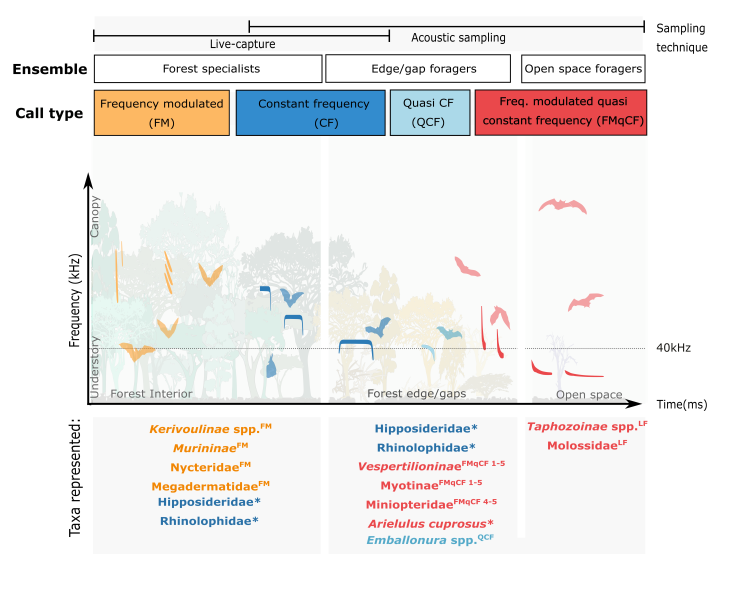PhD student Natalie Yoh’s research focuses on how bats in Malaysian Borneo are impacted by land use change particularly by the use of bioacoustics. He new paper is out this week in Ecological Indicators “A machine learning framework to classify Southeast Asian echolocating bats”. She tells us about it here.
‘One in every four mammals is a bat. These remarkable animals are an essential part of the habitats in which they live. Without them we wouldn’t have many important crops, such as durian, tequila, and bananas, and they help protect our rice crops and chocolate from insects. One way in which we monitor bat populations is by listening to their calls. Most bat species produce ultrasonic, echolocation calls to help them navigate their environments and find food at night.
This type of acoustic monitoring is relatively simple to do in places like Europe and North America where there are a limited number of species, and where we know quite a lot about these nocturnal animals. However, this is much more difficult in Southeast Asia which is home to more than 388 different bat species. Here, many species have very similar calls as they navigate their environments in similar ways. Nevertheless, it is essential we can monitor how their populations are changing as over 50% of bat species in Southeast Asia are currently at risk of extinction because of changes to their habitats.
In our recent paper A machine learning framework to classify Southeast Asian echolocating bats, we developed a framework to be better able to monitor bats in Southeast Asia using acoustics. Instead of trying to identify every species individually, we grouped calls that were very familiar into representative groups (e.g., bats which are very specialised to living in the rainforest understorey produce very similar calls). This meant that even though we only had access to calls for around half of bats on Borneo, we could create an AI tool that could identify if it was likely to be a bat that was sensitive to rainforest disturbance or not. This provides us with a tool to monitor how bat communities are changing until such a time where we know more about each species. This can therefore help us design better conservation strategies to help protect them in the meantime.
This project was a partnership between Durrell Institute of Conservation and Ecology, Texas Tech University, the Southeast Asian Bat Conservation Research Unit, the University of Malaysia in Sarawak, the University of Otago, the Taiwan Forestry Research Institute, and the National Parks Board in Singapore.’
Natalie‘s PhD supervisors were Dr Matthew Struebig and Dr Jake Bicknell.
The full paper, A machine learning framework to classify Southeast Asian echolocating bats is available to read here.
This blog was repurposed from an original article written for Scienvy, see it in full here.

